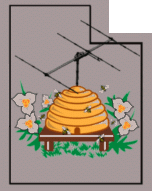The 630/2200 meter receivers:
The 2200 (135.7-137.8 kHz) and the 630 meter (472-479 kHz) bands are
the newest "LF" and "MF" band to U.S.
Amateurs - the other MF band being 160 meters. Like 160 meters,
these are mostly "winter time" bands when noise - a significant portion
of
which is lightning static - is lower and the nights are longer and
deeper, both of which are beneficial to reception at these
frequencies. Like 160 meters, there is a significant challenge
with transmitting:
Full-sized antennas are out of the question which means that
overall transmit efficiency is quite poor meaning that signals are
generally weak. Because of the comparatively weak signals, the
high noise levels and the fact that the bands aren't very large
(2.1kHz wide on 2200, 7 kHz wide on 630) voice
modes are rarely used with most operation on CW, WSPR, JT-9 and similar
weak-signal modes.

